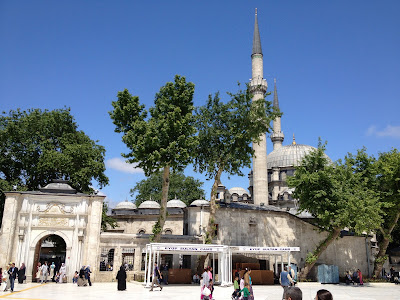Short history of Roman Empire
Hello Friends, In this blog, I explain the short history of the Roman Empire.
The Roman Empire emerged from the Roman Republic, a period of political turmoil and social upheaval, around 27 BCE when Augustus became its first emperor. Under Augustus and his successors, the empire experienced a period of relative peace and stability known as the Pax Romana, during which Rome reached the zenith of its power, stretching from Britannia in the north to Egypt in the south and from Hispania in the west to Mesopotamia in the east. This era saw remarkable achievements in engineering, governance, and culture, with iconic structures like the Colosseum and the aqueducts still standing as a testament to Roman ingenuity.
However, the empire faced significant challenges in the form of internal strife and external threats. Political intrigue, succession crises, and corruption-plagued the imperial court, leading to periodic instability. Meanwhile, barbarian tribes, such as the Germanic Vandals and Visigoths, posed constant threats to Rome's borders, putting immense pressure on the empire's defenses. The economic strain of maintaining such a vast territorial expanse, coupled with issues like inflation and debasement of currency, further weakened the empire's foundations.
The third century CE marked a period of crisis for the Roman Empire, characterized by military defeats, civil wars, and economic collapse. Emperors rose and fell with alarming frequency, often meeting violent ends at the hands of rivals or disgruntled troops. The empire was divided into smaller administrative units in an attempt to better manage its sprawling territories, but this only exacerbated existing tensions. The crisis reached its peak with the sacking of Rome by the Visigoths in 410 CE, a symbolic blow to Roman prestige and power.
Despite intermittent periods of recovery, the Western Roman Empire continued its decline throughout the fourth and fifth centuries CE. In 476 CE, the last Roman emperor in the West, Romulus Augustulus, was deposed by the Germanic chieftain Odoacer, marking the traditional end of the Western Roman Empire. However, the Eastern Roman Empire, centered in Constantinople, endured for nearly a millennium longer, preserving much of Rome's cultural and intellectual heritage. The Byzantine Empire, as it came to be known, continued to exert influence over the eastern Mediterranean region until its eventual fall to the Ottoman Turks in 1453 CE.
The legacy of the Roman Empire is profound and far-reaching, shaping the development of Western civilization in countless ways. Its contributions to law, language, architecture, and governance continue to be felt to this day, serving as a lasting reminder of the empire's enduring impact on human history.
.jpeg)
.jpeg)
.jpeg)

Comments
Post a Comment